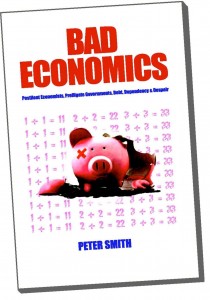Do the Treasurer’s and PM’s remarks continue to resonate?
A week after the publication of the March quarter national accounts, are we still walking with a “bounce in our step” and feeling “proud”? Do politicians ever review their remarks and cringe?
I hope the manufacturing workers who lost their jobs over the past year don’t feel left out like me. Because, you see, I made absolutely no contribution to Australian production in the March quarter. Mind you, I have the consolation of knowing that if production were to fall back in future, as it was reported to have done in the March quarter of last year for example, I am safe from the despondency and shame that would befall the nation.
A first point to make is that while Gina Rinehart might have had something to do with boosting production in the March quarter Wayne Swan didn’t. He should send a brief thank-you note to Ms Rinehart. But hint to the Treasurer: keep the note secret from Paul Howes.
He should send a brief thank-you note to Ms Rinehart. But hint to the Treasurer: keep the note secret from Paul Howes.
A second point to make is that national accounts give only a rough estimate of how the economy is doing. We should treat the numbers with a degree of circumspection. Though this seemed not to have struck many economists, including a breathless one I saw commenting on TV.
In the case of the year to March, the reported growth rate of 4.3 per cent was elevated because GDP was rebounding off the March quarter of 2011 when it was reported to have fallen by 0.5 per cent. Whether in fact GDP did fall in the March quarter last year is probably moot but that is what the numbers say, just as they say GDP increased by 1.3 per cent in the March quarter this year.
Unusually, growth in real GDP was reported to have exceeded nominal GDP in both the March and December quarters. I looked at the seasonally adjusted quarterly changes in real and nominal GDP going back to the start of the ABS series in December 1959. Of the 210 observations, on only fourteen occasions did the growth in real GDP outstrip nominal GDP and on only one occasion did it do that in consecutive quarters. The reason is clear. Generally we have some price inflation. What does this mean? It probably means that the numbers are wrong but that is always the case. The question is how wrong.
Of course, the numbers are the only GDP numbers we have and you can’t ignore them; even if Joe Hockey would have liked to. At the same time, it is plain silly to think we have a robustly growing economy; unless you think Glenn Stevens has lost the plot. Since March last year the Reserve Bank has lowered the cash rate on four separate occasions; bringing it down from 4.75 to 3.5 per cent. There is no way the RBA would bring the cash rate down at all if the economy were growing at over 4 per cent; it would more likely increase rates. Then we have the employment numbers.
From the March quarter 2011 to the March quarter 2012, employment increased by only a measly 0.3 per cent. Hours worked (overall) increased by just 0.4 per cent; and in the private sector they actually fell. Part of the key to the subdued labour market is the manufacturing sector which was reported to have made zero contribution to trend economic growth over the year.
Mining construction is the driving force holding the economy up. Alone, that will not be sufficient to give a gloss to the numbers if the rest of the economy continues to struggle. It is true that the May employment figures (also out last week) showed a significant uptick and brought the PM and Treasurer to the microphone again. But anecdotal evidence of recent and expected job losses suggests that this sample estimate is likely to prove aberrant.
It would not be surprising if the March quarter growth in GDP of 1.3 per cent were revised down and the June quarter’s result came in showing little growth. In that case, the annual reported growth would fall fairly sharply as the quarterly rebound from last year’s March quarter result fell out of calculation. Then of course the Treasurer would have to rend his garments in his contrition and tell us all to kiss goodbye to that bounce. The Prime Minister would likely be missing in action. Such are the consequences of pinning political reputations and the nation’s mood on the vagaries of the national accounts.
Visit Peter Smith’s website badeconomics.com.au
Peter Smith’s book Bad Economics has just been published by Connor Court. You can purchase (post free) here…
Subscribe to Quadrant magazine here…
 Sign In
Sign In 0 Items (
0 Items ( Search
Search









